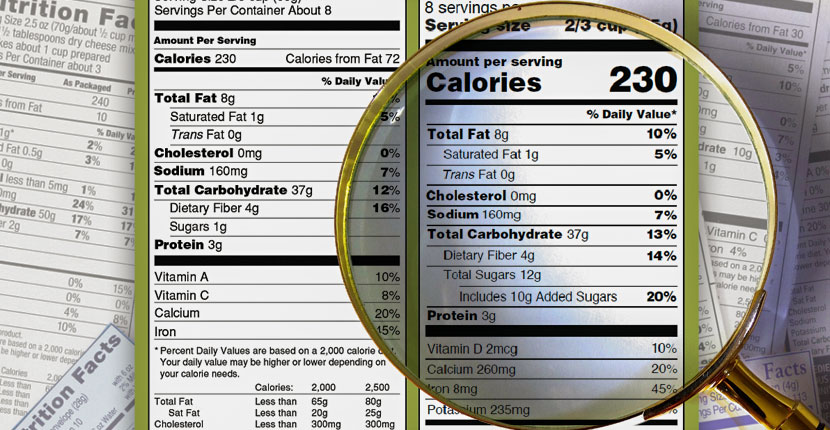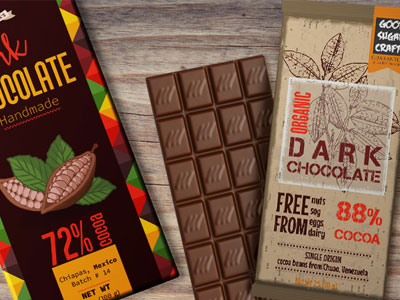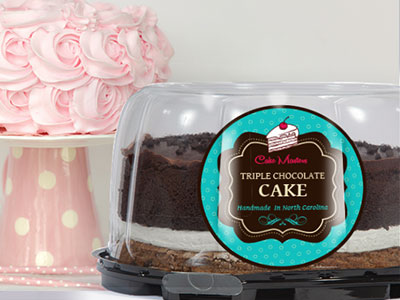Though nutritionists continually warn of the dangers of excessive sugar intake, sugary foods are as popular as ever, especially chocolate, ice-cream, cakes, pies, cupcakes and all sorts of candy. Unlike some food manufacturers who sell vegetables, wholefood products or other healthy food and have to make an effort to explain to consumers why their products are good, sugary food producers don’t need to lift a finger in that sense. People already love consuming sweet products. However, due to sweet products popularity, the competition in that area is very high and food producers have to work hard to make their product visible. That’s where the designer’s creativity assumes in important role.
Another thing that confectionery producers may not be so happy about is the new nutrition facts labeling regulation that was announced by the Food and Drug Administration in 2016. This new regulation requires all packaged food to include information about total sugars, as well as information about added sugars in grams and in daily value percentage. Though it will take some time for producers to make the changes to their labels, this is a welcome change for all consumers because it helps them make better informed decisions about their nutrition.
As most consumers today know, a big portion of food products contain added sugars. Consumers who buy chocolate, cake and other sweets already know that their chosen food is full of sugar, so the new information on labels is even more valuable on products where we don’t expect to find a lot of this sweet nutrient. It is crucial to know the amount of sugar in food, because the transparency of this information may help in the prevention of obesity and other health issues.
How to Make Sweets Even Sweeter with Attractive Labels
Food labels are applied to cakes, candy and other confectionary to inform potential customers of the packaging contents and details about the food’s origin, how it was created, distributed, etc. Apart from making sure that all required information is accurately displayed on their product label, food producers invest a lot energy into label design and creating visually attractive stickers that will call out from the store shelf.
For example, cake manufacturers have a challenging job following their state’s cottage food labeling requirements and creating unique cake labels that will communicate the product’s quality to consumers. Candy producers need to take into account the type of event where their candy product is served (corporate event or private party) and design candy labels to reflect that occasion. Ice cream producers will spend a fair amount of time figuring out whether their product meets the strict FDA requirements for ice cream labeling, or if they need to label their product “frozen dairy dessert”. In either case they need to think about label design and how to make it appealing to consumers. One of the biggest challenges of creating winning cupcake labels is figuring out how to fit nutritional information and info about the manufacturer on a small food tag. In some cases, food producers are allowed to incorporate the food label with an invoice, which leaves more options for stylish cupcake sticker design.
Food Packaging Labels team has a lot of experience with designing and printing different types of sugary food labels and will gladly walk you through the procedure.
How to Choose Proper Label Material
We’ll advise you on the proper label facestock, adhesive, shape, dimensions, color and printing method according to your product label purpose, storing conditions and several other aspects of using it. Here are some of things you need to consider when ordering labels for your confectionary product:
- Dimensions of your food product and packaging.
- How many labels you need in total.
- Will the label be applied by machine or hand?
- Do you need the stickers on sheets or rolls?
- Is the surface of the packaging regular or uneven?
- Will the product be kept in freezing conditions?
- Will the product be exposed to moisture?
- Will it contain a barcode?
These are only some of the questions that will determine your food label facestock (matte paper, glossy paper, vinyl, etc.), adhesive (permanent, freezer grade, sticky or non-adhesive, etc.), printing method (digital, offset, flexographic), colors (black or white, full color), dimensions (from tiny to very large), shape and order size.
You are responsible for providing information for nutrition facts and sugar labels, but we’ll provide valuable advice wherever needed.



